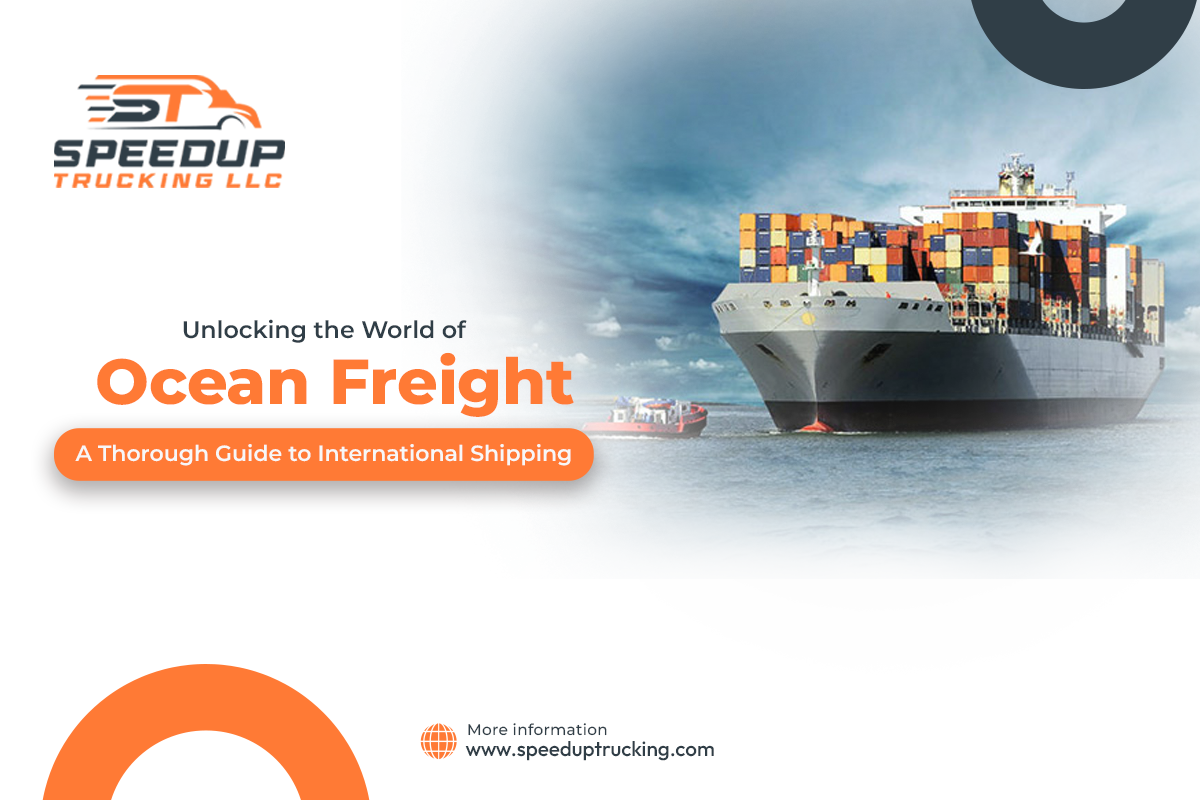In the realm of international trade, ocean freight stands as a cornerstone method of transporting goods across borders. For many Indian exporters, the allure of ocean freight lies in its seamless blend of convenience and cost-efficiency. With the vast expanse of the world’s oceans at their disposal, exporters opt to embark on this maritime journey to reach global markets with their merchandise.
Essential Documents for Ocean Freight Shipping
When embarking on the voyage of international trade via ocean freight, a crucial aspect that demands meticulous attention is the collection and preparation of necessary documents. These documents not only serve as a compass to guide your shipment but also ensure a seamless passage through the complex waters of global logistics. In this segment, we unveil the essential documents required to set sail on your ocean freight export journey.
- Bill of Lading (B/L): The Bill of Lading is a fundamental document issued by the carrier, acknowledging the receipt of your goods and providing a detailed description of the cargo.
- Commercial Invoice: The commercial invoice provides a comprehensive breakdown of the goods being shipped, their values, and terms of sale.
- Packing List: The packing list offers a detailed inventory of each package within the shipment.
- Certificate of Origin: This document, issued by the exporter, certifies the origin of the goods being shipped.
- Insurance Certificate: An insurance certificate provides evidence of insurance coverage for the cargo during transit.
- Export License: This document is issued by the relevant government authority and grants permission for the export of specific items.
- Booking Confirmation: The booking confirmation is provided by the carrier and confirms the reservation of space for your cargo on a specific vessel
- Customs Documentation: Various customs forms and declarations are required for international shipments.
- Letter of Credit (if applicable): If payment terms involve a letter of credit, this document outlines the terms and conditions under which the exporter will receive payment from the buyer’s bank.
- Phytosanitary Certificate (if applicable): For shipments of agricultural products, a phytosanitary certificate may be necessary to certify that the goods meet the phytosanitary regulations of the destination country.
- Hazardous Materials Declaration (if applicable): When shipping hazardous materials, a declaration detailing the nature and classification of the goods is required to ensure compliance with safety regulations.
How does ocean freight work?
The process involves several key steps, each playing a crucial role in the successful execution of the shipment.
- Preparation and Documentation:
- Gather and prepare all necessary export documentation, including the commercial invoice, packing list, bill of lading, certificate of origin, and any required licenses or permits.
- Verify compliance with export and import regulations of both the origin and destination countries.
- Determine the Incoterms (International Commercial Terms) that define the responsibilities and costs between the buyer and seller.
- Booking and Cargo Reservation:
- Contact a freight forwarder or shipping line to book space on a suitable vessel.
- Receive a booking confirmation that includes details of the vessel, voyage, and loading dates.
- Provide accurate cargo details to the carrier, including weight, dimensions, and special handling requirements.
- Cargo Packaging and Labeling:
- Pack and label the cargo according to international shipping standards to ensure safe transportation and easy identification.
- Properly secure and protect the goods to prevent damage during transit, especially for fragile or sensitive items.
- Customs Clearance and Export Procedures:
- Submit required customs documents to authorities for export clearance.
- Comply with any export control regulations and obtain necessary export licenses if applicable.
- Container Loading and Transport to Port:
- Deliver the cargo to the designated container yard or terminal for loading onto the chosen vessel.
- Ensure proper stowage and lashing of containers to prevent shifting or damage during sea transport.
- Vessel Departure and Transit:
- The loaded vessel departs from the origin port and embarks on its voyage across international waters.
- During transit, the carrier manages the cargo’s safety, navigation, and adherence to maritime regulations.
- Import Customs Clearance and Procedures:
- The cargo arrives at the destination port, and customs clearance procedures begin in the importing country.
- Submit required import documentation and pay applicable duties, taxes, and fees.
- Unloading and Delivery:
- Unload the cargo from the vessel and transfer it to the destination terminal or distribution center.
- Ensure efficient handling and transportation of goods from the port to their final destination.
- Distribution and Final Delivery:
- Distribute the cargo according to the terms outlined in the sales contract or Incoterms.
- Deliver the goods to the buyer’s designated location, whether it’s a warehouse, retail store, or end customer.
- Payment Settlement:
- Execute payment transactions according to the agreed terms between the buyer and seller.
- Address any discrepancies or issues related to the shipment to ensure smooth financial transactions.
Advantages and disadvantages of ocean freight shipping
Ocean freight, as a method of international shipping, comes with its own set of advantages and disadvantages. Let’s explore the advantages and disadvantages of ocean freight:
Advantages:
One of the most significant advantages of ocean freight is its cost-effectiveness, especially for large and heavy shipments.
Ocean vessels have a high cargo capacity, allowing businesses to transport large quantities of goods in a single shipment.
Ocean freight is generally considered a more environmentally friendly option compared to air freight due to lower carbon emissions per unit of cargo.
Ocean freight accommodates various types of cargo, including dry goods, liquids (via tankers), vehicles, machinery, and oversized items.
Ocean freight rates tend to be more stable and predictable over time compared to the volatile nature of air freight rates.
Unlike air freight, ocean freight often has less stringent packaging requirements. This can result in cost savings for businesses.
Disadvantages:
Compared to air freight, ocean freight is slower.
Not all locations have direct access to ocean ports.
Ocean shipments are vulnerable to weather-related disruptions, such as storms or rough seas, which can lead to delays in delivery schedules.
Once a shipment is on a vessel, changes to the delivery schedule or destination can be challenging and may incur additional costs.
International ocean freight involves complex customs and regulatory procedures. Errors or delays in paperwork can result in clearance issues and additional costs.
Although modern cargo ships are designed to minimize the risk of damage, there’s still a possibility of cargo shifting, moisture damage, or theft during transit.
Conclusion
Ocean freight shipping offers a cost-effective and environmentally friendly option for international shipping, especially for bulk and non-time-sensitive cargo. However, longer transit times, potential for disruptions, and regulatory complexities are important considerations to keep in mind when choosing ocean freight as a mode of transportation. Businesses and individuals should carefully weigh these advantages and disadvantages based on their specific needs and priorities.


